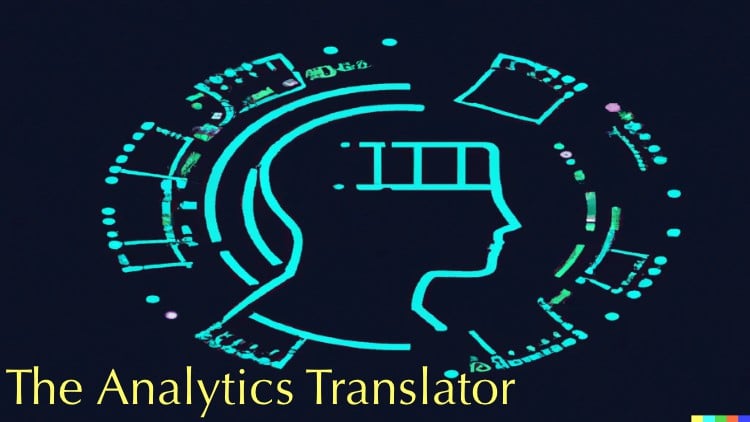
The role of analytics translator is not well defined, yet, an exciting, challenging, and emerging role for a future job profile.
Part I Gives an overview of 15 key capabilities that fall into the analytics, business, and IT know-how class to master the role of an analytics translator.
Part II (new update Oct 2023) delves deep into what the future holds for our workplaces, shining a light on the latest trends of generative AI and its use cases for the analytics translator.
Each learning path is different, and multiple topics and skills contribute to this job role. The content should illuminate the difference between data science and the vast learning possibilities within the job role of an analytics translator.
Thus, the goal is to drive your personalized curriculum of the learning journey by a better understanding of the connected terminology between other subjects.
The mission of the lecture: judge better on your analytics translator learning journey.
Analytics translators have the vital goal of integrating analytics capabilities in a company.
They identify value cases for the business that analytics can help solve.
Lead or support data science and IT teams in developing data-driven solutions to these problems.
They ensure the usage within business operations.
They have to be front runners in embedding new technologies like generative AI 🙂
The top domains for an analytics translator are fluent speaking and understanding business know-how, IT constraints, and analytics understanding.
The lecture derives from practical insights in strategically embedding this role in global digital transformation initiatives.
Draw your own competence overview:
What are the technologies you focus on?
How do you operate and work?
Which customers or channels do you serve and how?
Don't underestimate these questions, the clearer you can answer these, the better for applying for a new role.
With ChatGPT, you can support the design of graphs; with three prompt refinement steps, you can design a multi-tier supply chain graph. Check it out!
We will use the GPT4 Advanced Analytics Module to understand text-to-task generation.